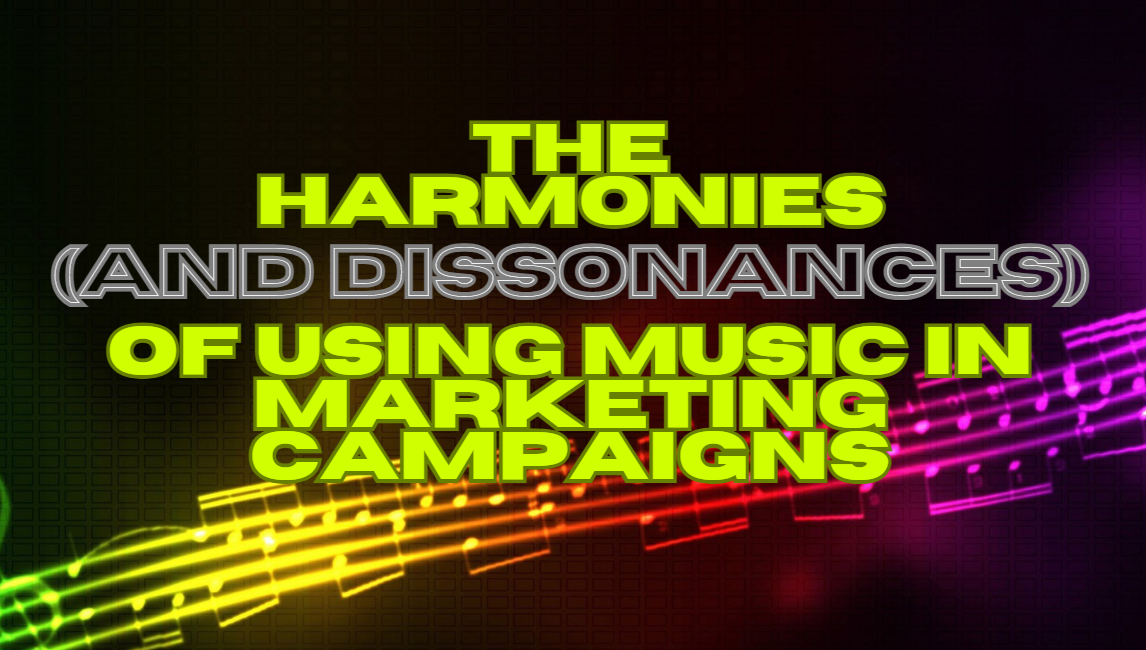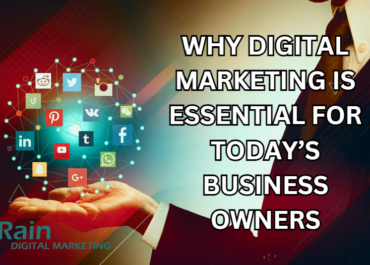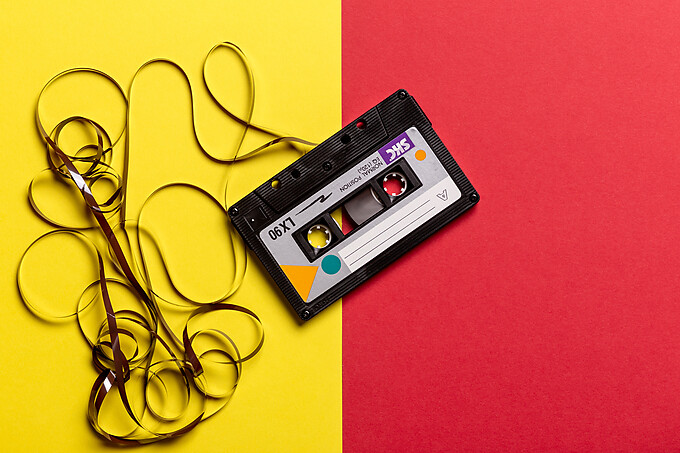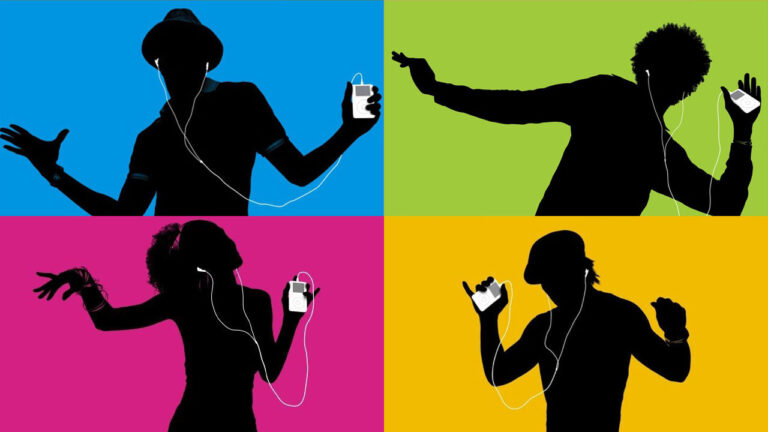The Harmonies (and Dissonances) of Using Music in Marketing Campaigns

In the realm of marketing, where every brand strives to carve a distinct identity and capture the hearts of consumers, the strategic use of music has emerged as a powerful tool to captivate audiences, evoke emotions, and enhance brand messaging.
… From catchy jingles that linger in our minds to emotionally charged soundtracks that evoke nostalgia, music has the ability to weave narratives, stir emotions, and leave a lasting impact.
However, behind the harmonious melodies lie a symphony of considerations, including costs, cultural sensitivities, and legal complexities, that marketers must navigate carefully.
In this article, we delve into the positive attributes and potential pitfalls of incorporating music into marketing campaigns, exploring how this sonic element can either enhance brand resonance or create discordant notes if not orchestrated with precision.
Join us today on a journey through the harmonies and dissonances of using music in marketing, where every note plays a crucial role in shaping brand perception and consumer engagement.
The Positive
Integrating music into a marketing campaign unveils a symphony of positive attributes that can elevate brand messaging and captivate audiences.
Through carefully curated soundtracks, catchy jingles, or culturally relevant tunes, businesses can tap into the universal language of music to convey messages, evoke emotions, and foster engagement.
Let’s delve deeper into the harmonious melodies of using music in marketing and uncover the tapestry of opportunities for brands to leave a lasting imprint in the hearts and minds of their consumers.
Emotional Connection:
Using music in a marketing campaign can be likened to unlocking a treasure trove of emotions within your audience.
Music has a unique ability to transcend language barriers and directly touch the heartstrings of individuals.
Whether it’s a nostalgic melody that evokes memories of the past, an upbeat rhythm that sparks joy and energy, or a soulful tune that resonates with deep emotions, the right music can create a profound emotional connection with your audience.
This connection goes beyond mere exposure; it taps into the subconscious, triggering feelings of familiarity, comfort, excitement, or inspiration. When harnessed strategically, music becomes a powerful tool to not only capture attention but also to forge lasting bonds that make your brand a part of your audience’s personal soundtrack.
Memorability:
Integrating music into a marketing campaign is akin to embedding a memorable hook that lingers in the minds of your audience long after the ad ends.
Music has a remarkable ability to enhance memorability by creating strong associative links.
A catchy jingle, a well-chosen soundtrack, or a unique musical theme can become synonymous with your brand, triggering instant recall whenever heard.
This memorability is reinforced through repetition, as the consistent use of the same musical elements reinforces brand identity and message retention.
In a sea of advertisements and content, music acts as a beacon, guiding your audience back to your brand with a familiar tune or rhythm, ensuring that your campaign leaves a lasting imprint in their memory.
Enhanced Storytelling:
Music serves as a powerful ally in enhancing storytelling within marketing campaigns, adding depth, emotion, and resonance to brand narratives.
By carefully selecting music that complements the storyline, marketers can create a multi-sensory experience that captivates audiences on a deeper level.
The right musical accompaniment can set the tone, convey mood and atmosphere, and guide the emotional journey of the audience through the narrative arc of the campaign.
Whether it’s building suspense, evoking nostalgia, or amplifying moments of triumph, music acts as a storytelling catalyst, intensifying the impact of the message being conveyed.
This synergy between music and storytelling not only engages the audience but also immerses them in a memorable and compelling brand experience that leaves a lasting impression.
Cross-Cultural Appeal:
Utilizing music in a marketing campaign offers a unique opportunity to bridge cultural divides and resonate with diverse audiences on a global scale.
Music is a universal language that transcends geographical boundaries and speaks to the shared human experience.
By selecting music with broad appeal or incorporating elements from various cultural genres, marketers can create campaigns that are inclusive and relatable to people from different backgrounds.
This cross-cultural approach not only fosters a sense of unity and connection but also demonstrates a brand’s sensitivity and appreciation for diversity.
Music becomes a powerful unifier, breaking down barriers and allowing messages to reach and resonate with a wide spectrum of audiences, regardless of cultural differences.
Increased Engagement:
Integrating music into a marketing campaign serves as a dynamic catalyst for increasing audience engagement and interaction.
Music has a magnetic effect that draws people in and captures their attention, making them more receptive to the message being conveyed.
Whether it’s through interactive music-driven experiences, such as challenges or games, or simply through the emotive power of a well-chosen soundtrack, music encourages active participation from the audience.
This heightened engagement is further amplified on digital platforms, where music can be used to create immersive experiences, drive social sharing, and prompt user-generated content.
By leveraging music as a tool to enhance engagement, marketers can foster deeper connections with their audience, spark conversations, and inspire action, ultimately driving the success of the campaign.
The Negative
While the use of music in marketing campaigns brings forth a range of positive benefits, it also presents certain negative attributes that businesses must be mindful of.
As we take a moment to explore the negative attributes of using music in marketing campaigns, we may find that a strategic and cautious approach might be necessary to mitigate such risks and maximize the benefits of incorporating music into brand communications.
Licensing Costs:
Incorporating music into a marketing campaign undoubtedly brings with it the consideration of licensing costs, which can present a significant financial investment for businesses.
Acquiring the rights to use copyrighted music, especially popular or well-known tracks, often involves negotiating licensing agreements and paying royalties to the respective artists, composers, and music publishers.
These costs can vary widely depending on factors such as the duration of use, the reach of the campaign, and the prominence of the music within the content.
For small businesses or startups with limited budgets, navigating these licensing expenses while ensuring compliance with legal requirements can pose a notable challenge, necessitating careful budgeting and strategic planning to optimize the return on investment from incorporating music into their marketing initiatives.
Mismatched Perception:
The strategic use of music in a marketing campaign can backfire if there is a mismatched perception between the music and the product or brand.
The emotional tone, genre, and lyrics of the music must align harmoniously with the brand’s identity, message, and target audience.
Failure to achieve this alignment can lead to confusion or disconnect among consumers, undermining the intended impact of the campaign.
For example, using music with a somber tone for a product aimed at creating a fun and lively experience may create a discordant note, causing potential customers to question the authenticity or relevance of the brand.
Thus, careful consideration and a deep understanding of how the chosen music resonates with the brand’s image and values are essential to avoid a mismatched perception that could detract from the campaign’s effectiveness.
Overexposure and Fatigue:
Using popular songs in a marketing campaign can indeed backfire on a business, particularly when the song becomes overexposed, leading to audience fatigue.
A once-catchy tune that initially captivated audiences may lose its charm and effectiveness when repeatedly heard across various advertisements or platforms.
This overexposure can diminish the song’s impact, causing listeners to tune out or become indifferent to the message being conveyed.
Moreover, if the song becomes associated with multiple brands or campaigns simultaneously, it can dilute the brand’s uniqueness and fail to leave a lasting impression.
To mitigate this risk, businesses must carefully assess the longevity and relevance of popular songs, considering factors such as current trends, audience preferences, and the potential for saturation in the market, to ensure that the chosen music remains impactful and resonant throughout the campaign’s lifespan.
Cultural Sensitivity:
Integrating music into a marketing campaign carries the potential risk of stirring up cultural sensitivities within the audience, especially when the chosen music fails to consider the diverse cultural backgrounds and preferences of the target audience.
Music is deeply rooted in cultural identity, and using culturally insensitive or appropriative elements can lead to backlash, alienation, and damage to the brand’s reputation.
For example, using sacred or traditional music without proper context or respect for its cultural significance can be perceived as disrespectful or offensive.
Similarly, misinterpreting cultural symbols or stereotypes in musical content can result in unintended miscommunication and negative perceptions among the audience.
To avoid these pitfalls, marketers must conduct thorough research, consult with cultural experts if necessary, and ensure that the music chosen for the campaign aligns with cultural sensitivities and values, fostering inclusivity and respect within the diverse audience base.
Legal Risks:
Incorporating music into a marketing campaign brings with it a set of legal risks that businesses must navigate to avoid potential legal consequences.
One of the primary concerns is copyright infringement, as using copyrighted music without proper licenses or permissions can result in legal actions such as cease-and-desist orders, fines, or even lawsuits.
Additionally, navigating the complex landscape of music licensing agreements, royalties, and intellectual property rights requires expertise and compliance with legal regulations.
Failure to adhere to these legal requirements not only poses financial risks but also tarnishes the brand’s reputation and credibility.
Moreover, the use of music in international markets may involve additional legal considerations related to cross-border copyright laws and licensing agreements, adding another layer of complexity for businesses operating globally.
Therefore, businesses must prioritize legal diligence, seek professional guidance when necessary, and ensure full compliance with music licensing and intellectual property laws to mitigate legal risks associated with using music in marketing campaigns.
A Real World Example
Earlier this year social media powerhouse TikTok, after a prolonged battle with the Universal Media Group over licensing, was forced to silence many posts that they deemed illegally used copyrighted content.
In a simple message sent to posters explaining the content removal, TikTok simply stated, “Sound removed due to copyright restrictions.”
Now, as many in the marketing world already know, over the past several years, TikTok has become one of the most popular marketing outlets for businesses and social media influencers alike.
The ability to quickly promote or review a service and/or product in a short video has become the new way to promote products to a new generation of buyers.
… And to accentuate your message with a short snippet of music only helps to draw the viewer’s senses in even more.
So, needless to say, when TikTok users found their library of posts suddenly silenced, they were less than pleased.
Reporting on the removal, The Enquirer reported that Universal Music Group had not been able to reach an agreement with TikTok regarding music licensing on the app, causing their songs to be removed.
In an open letter, the record label stated that negotiations came to a halt due to many issues, including artist pay, user safety, and artificial intelligence protection, adding that it was their belief that TikTok executives tried to bully them into coming to an agreement.
Responding to this, TikTok stated that UMG’s statement was a false narrative created out of greed.
As an update to this recent controversy, many of the videos who had been party to this content removal have found their audio restored (most likely due to any ongoing negotiations between TikTok and UMG) but, as a note, this type of confusion is exactly why – to some – the use of copyrighted content such as music to help boost your promotional content can be more trouble than it’s worth.
The Wrap Up
As we reach the crescendo of our exploration into the use of music in marketing campaigns, it’s clear that this sonic element holds immense potential to amplify brand messages, forge emotional connections, and enhance storytelling.
The positive attributes, including emotional resonance, memorability, and cross-cultural appeal, highlight the transformative power of music when harnessed effectively.
However, the journey through the harmonies and dissonances of using music in marketing also uncovers potential pitfalls, such as licensing costs, mismatched perceptions, and cultural sensitivities, which demand careful consideration and strategic planning from marketers.
In the symphony of marketing strategies, music serves as both a conductor and a performer, capable of captivating audiences and leaving a lasting imprint on brand perception.
By striking the right chord, understanding audience preferences, and navigating legal and cultural landscapes with finesse, marketers can orchestrate campaigns that resonate deeply and stand out amidst the cacophony of digital noise.
Ultimately, the harmonies and dissonances of using music in marketing campaigns remind us of the delicate balance between creativity and strategy, emotion and rationality, ensuring that every note contributes harmoniously to the brand’s symphony of success.
P.S. Are you ready to set your marketing campaign to a new tune?
If so, Rain Digital would love to help!
Our team’s years of digital marketing experience are the exact note you need to shape the symphony that is your business’s marketing campaign. (… was that too much of a reach?)
Well, anyway, you get the point… We here at Rain Digital want to be part of the solution to your marketing needs.
So, if you’re interested in taking your marketing campaign up an octave, (… ooh, this is getting pretty bad…) don’t hesitate to let your friends here at Rain Digital help orchestrate a solution for your marketing needs. (… we had to get at least one more in there!)







